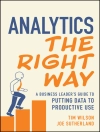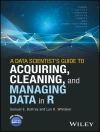1. 1 Welcome to ggplot2 ggplot2 is an R package for producing statistical, or data, graphics, but it is unlike most other graphics packages because it has a deep underlying grammar. This grammar, based on the Grammar of Graphics (Wilkinson, 2005), is composed of a set of independent components that can be composed in many di?erent ways. This makesggplot2 very powerful, because you are not limited to a set of pre-speci?ed graphics, but you can create new graphics that are precisely tailored for your problem. This may sound overwhelming, but because there is a simple set of core principles and very few special cases, ggplot2 is also easy to learn (although it may take a little time to forget your preconceptions from other graphics tools). Practically, ggplot2 provides beautiful, hassle-free plots, that take care of ?ddly details like drawing legends. The plots can be built up iteratively and edited later. A carefully chosen set of defaults means that most of the time you can produce a publication-quality graphic in seconds, but if you do have special formatting requirements, a comprehensive theming system makes it easy to do what you want. Instead of spending time making your graph look pretty, you can focus on creating a graph that best reveals the messages in your data.
Inhoudsopgave
Getting started with qplot.- Mastering the grammar.- Build a plot layer by layer.- Toolbox.- Scales, axes and legends.- Positioning.- Polishing your plots for publication.- Manipulating data.- Reducing duplication.












